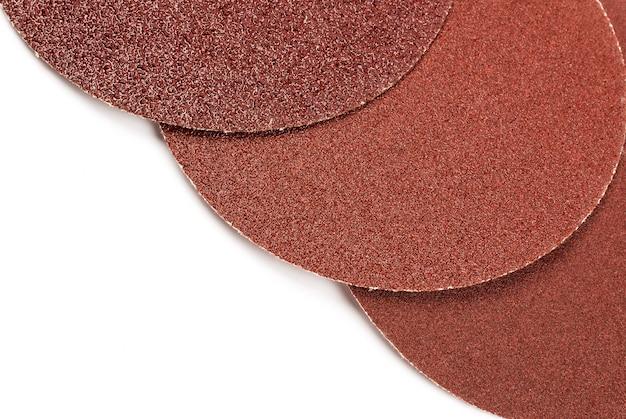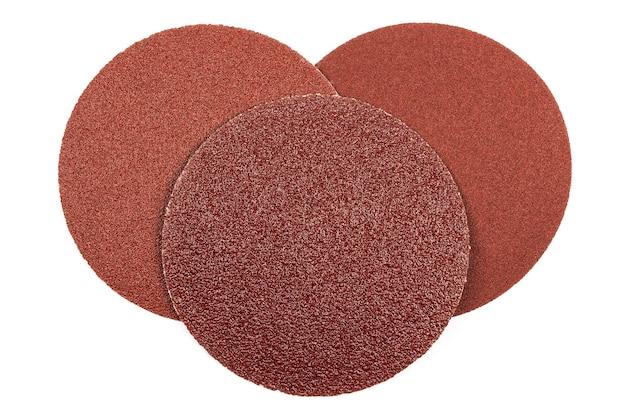Welcome to our comprehensive guide on what grit sandpaper to use for car rust removal and painting! If you’re dealing with a rusted car or any metal surface that needs some TLC, you’ve come to the right place. Rust is an absolute nightmare for any vehicle owner, but fear not – with the right tools and techniques, you can restore your car to its former glory.
In this blog post, we’ll answer all of your burning questions about sandpaper grits, rust removal, and painting. We’ll explore the different grit sizes of sandpaper and their specific uses, discuss whether sanding off rust before painting is necessary, guide you through the process of prepping and painting rusty metal, and even dive into the world of sandblasting media for heavy rust.
So, whether you’re a DIY enthusiast or a professional looking for expert tips, grab your sandpaper and let’s get started on transforming that rusty metal into a pristine masterpiece.
What Grit Sandpaper is Best for Car Rust
So, you’ve discovered some rust on your beloved car. Don’t worry, it happens to the best of us. Rust is like that uninvited guest who shows up to a party and refuses to leave. But fear not, because we’re here to tell you all about the best grit sandpaper to tackle that pesky car rust. Get ready to say goodbye to that unwanted guest!
Understanding Grit Size
Before we dive into the specifics, let’s talk about grit size. Grit refers to the coarseness of the sandpaper. The higher the grit number, the finer the sandpaper. So, when it comes to tackling car rust, you’ll need sandpaper with a specific grit size to get the job done right.
#60 Grit: The Warrior of the Sandpaper World
If you’re dealing with some serious rust that is determined to stick around, it’s time to bring out the big guns. Enter the #60 grit sandpaper. This coarse sandpaper is like the warrior of the sandpaper world. It’s tough, aggressive, and ready to take on even the most stubborn rust.
#120 Grit: The Middle Ground
Now, if your car rust is not as severe, but still putting up a fight, it’s time to turn to the #120 grit sandpaper. This is the middle ground between coarse and fine, making it perfect for removing moderate rust without causing too much damage to the underlying surface. Think of it as the diplomatic negotiator between you and the rust.
#220 Grit: The Smooth Operator
For those of you dealing with light surface rust or looking to smooth out the rough edges after using coarser grits, the #220 grit sandpaper is your smooth operator. It delicately glides over the surface, giving a refined finish while saying, “Rust, I’ve got this under control.”
#400 Grit: The Finishing Touch
Ah, the #400 grit sandpaper, the final touch in your car rust removal journey. This fine-grained sandpaper is all about the finishing touches. It smooths out any remaining imperfections, leaving your car looking as good as new. It’s like the icing on the cake, or the cherry on top. The choice is yours!
The Verdict: It’s All About the Balance
Ultimately, the best grit sandpaper for car rust depends on the severity of the rust and your desired outcome. In some cases, you may need to start with a coarse grit and gradually work your way up to a finer grit for a polished finish. It’s all about finding the right balance.
So next time you’re faced with the daunting task of dealing with car rust, remember that with the right grit sandpaper and a little bit of elbow grease, you can conquer this challenge. Don’t let rust take over your car’s beauty – show it who’s the boss!
FAQ: What Grit Sandpaper Should You Use for Car Rust
If you’re dealing with car rust, you’re probably wondering about the right sandpaper grit to use. We’ve compiled a list of frequently asked questions to help you make sense of it all.
What is 7000 grit sandpaper used for
7000 grit sandpaper is incredibly fine and is typically used for polishing surfaces to a high shine. While it may not be necessary for removing rust, it can be useful for fine-tuning the smoothness and shine of your car’s paint job.
Should I sand off rust before painting
Yes, it’s important to sand off rust before painting to ensure proper adhesion of the paint. Rust creates a rough surface that won’t allow the paint to adhere well. By sanding, you remove the rust and create a smooth surface for the paint to stick to.
How do you prep and paint rusty metal
To prep rusty metal for painting, start by cleaning the surface with a degreaser or vinegar. Then, use sandpaper or a wire brush to remove the rust. After that, apply a rust converter or primer to prevent further corrosion. Lastly, paint the surface with a rust-resistant paint.
What is the best sandblasting media for heavy rust
For heavy rust, coarse sandblasting media like aluminum oxide or garnet is often recommended. These abrasives have the power to strip away tough rust and prepare the surface for further treatment or painting.
What is the best paint to cover rust
When it comes to covering rust, using a rust-inhibiting paint is essential. Look for paints specifically formulated for rust, like rust reformers or rust-encapsulating primers. They provide a protective barrier and help prevent future rusting.
Can you clear over 600 grit
While it is possible to clear-coat over 600 grit sandpaper, it may not produce the smoothest finish. To achieve the best results, it’s generally advisable to use finer grits like 1500 or 2000 before applying clear coat.
What grit sandpaper do you use before painting a car
Before painting a car, it’s recommended to use a medium to fine grit sandpaper, such as 320 or 400. This helps remove any unevenness, imperfections, or old paint, providing a smooth and clean surface for the new paint to adhere to.
Does WD-40 Remove rust
Yes, WD-40 can help remove rust. Its formula can loosen rust and make it easier to scrub away. However, it’s important to note that WD-40 is not a long-term rust solution. Once the rust is removed, it’s best to follow up with proper rust prevention methods.
What is 80 grit sandpaper used for
80 grit sandpaper is relatively coarse and is commonly used for heavy-duty sanding and shaping tasks. It’s effective for removing heavy rust, paint, or rough surfaces. However, for car rust, it may be too aggressive and leave deep scratches, so it’s better suited for initial rust removal on other surfaces.
Will painting over rust stop it
Painting over rust may temporarily slow down the rusting process, but it won’t stop it completely. The rust will continue to spread under the paint unless it has been properly removed and the area has been treated with rust converter or primer.
What is the best paint for rusted steel
When it comes to painting rusted steel, using a direct-to-metal (DTM) paint or a rust-inhibiting primer is recommended. These paints are specifically designed to adhere to and protect metal surfaces, preventing further rust formation.
Can I sand rust off metal
Yes, sanding rust off metal is a common method to remove surface rust. Use sandpaper or a wire brush to scrub away the rust until you achieve a smooth surface. It’s important to note that sanding may not be suitable for heavily rusted areas, where more aggressive methods might be necessary.
How do you sand a rusted car
To sand a rusted car, start by cleaning the surface with a degreaser or vinegar. Then, use sandpaper or a wire brush to gently remove the rust. Be sure to sand around the rusted area to create a smooth transition. Afterward, clean the surface again and apply rust converter or primer before painting.
Can I use sandpaper to remove rust
Sandpaper can be an effective tool for removing rust from metal surfaces. It helps scrub away the rust by manually abrading the surface. However, keep in mind that sandpaper may not be the best choice for heavily rusted areas, as more aggressive methods might be required.
How do you neutralize rust before painting
To neutralize rust before painting, consider using a rust converter. Rust converters contain chemicals that react with rust and turn it into a more stable compound. Follow the manufacturer’s instructions regarding application, wait times, and subsequent paint steps for the best results.
What grit sandpaper should I use to remove rust from metal
To remove rust from metal, start with a coarse grit sandpaper, such as 80 or 100. This will quickly remove the rusted layers. Then, switch to a medium grit, like 150 or 180, to smooth the surface further. Finally, finish with a fine grit sandpaper, such as 220 or 320, to refine the surface before priming and painting.
What grit disc removes rust
For rust removal, a coarse grit disc, such as 40 or 60, is commonly used. These discs are more aggressive and can quickly remove thick layers of rust. Once the majority of the rust is removed, switch to finer grit discs for smoothing and preparing the surface.
How do you sand and paint rusted metal
To sand and paint rusted metal, start by sanding the surface with coarse grit sandpaper or using a wire brush to remove the rust. Clean the surface thoroughly, removing any dust or debris. Next, apply a rust converter or primer to prevent further corrosion. Finally, paint the surface with a rust-resistant paint, following the manufacturer’s instructions for application and drying times.
What is the best grit for sanding metal
The best grit for sanding metal may vary depending on the specific job. However, a medium grit sandpaper, such as 120 or 150, is often a good starting point for general metal sanding tasks. From there, you can adjust the grit based on the level of smoothing or roughing required.
What is medium grit sandpaper
Medium grit sandpaper is typically in the range of 80 to 120. It strikes a balance between aggressiveness and smoothness, making it suitable for various tasks. It can be used for removing moderate rust, smoothing surfaces, or preparing them for further treatment.
What is the best primer for rusty metal
When dealing with rusty metal, using a rust-inhibiting primer is essential. Look for primers specifically designed for rusty surfaces, such as rust converters or rust-encapsulating primers. These primers create a protective barrier and help prevent further rust formation.
Remember, when tackling car rust, it’s important to assess the severity of the rust and choose the appropriate tools and methods. If in doubt, consult with a professional to ensure the best results. Happy rust removal and painting!
_Disclaimer: This FAQ-style information is provided for general knowledge and entertainment purposes only. Follow all safety guidelines, manufacturer instructions, and seek professional assistance if needed.

